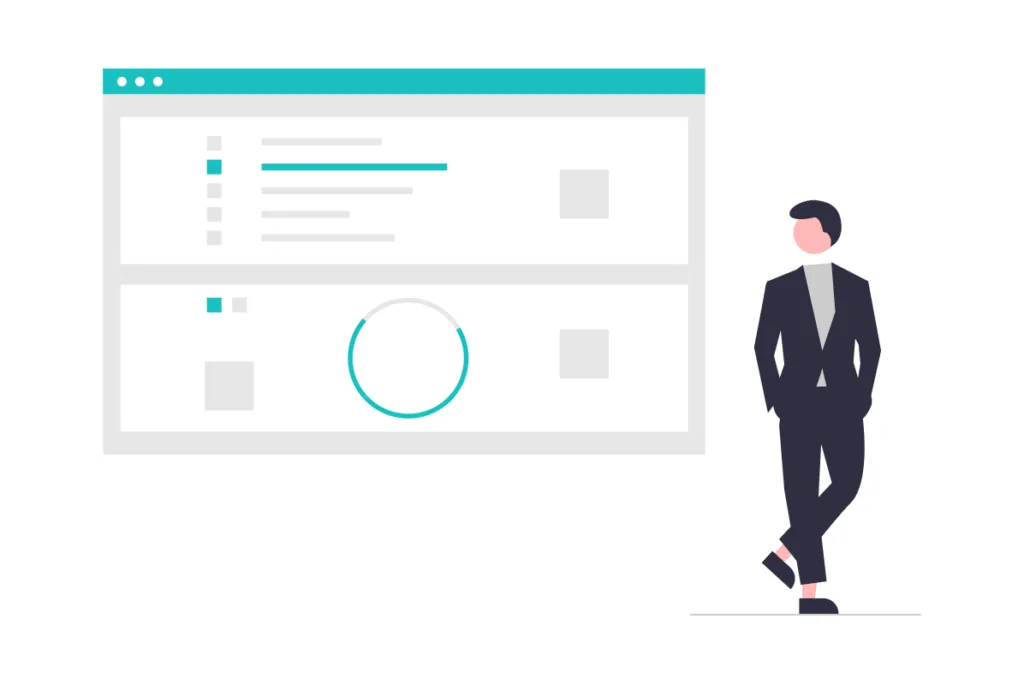The Comprehensive Guide to Paid Advertising: Strategies, Benefits, and Best Practices
Explore the world of paid advertising, a strategic marketing approach where businesses pay for targeted visibility. This concise guide covers the definition, benefits, strategies, and future trends of paid advertising. From search engine to social media, discover how paid advertising drives success in online marketing.

I. Introduction
A. Definition of Paid Advertising
Paid advertising is a strategic marketing approach in which businesses or individuals pay to have their messages or promotions displayed to a target audience. In the digital realm, this typically involves paying for placement on various online platforms. The primary goal is to reach potential customers, drive engagement, and achieve specific marketing objectives.
Examples of Paid Advertising Channels:
- Search Engine Advertising:
- Google Ads: Paid search ads displayed at the top of search engine results.
- Bing Ads: Similar to Google Ads, targeting a different audience.
- Social Media Advertising:
- Facebook Ads: Targeted ads based on user demographics and interests.
- Instagram Ads: Visual-centric ads for brand promotion and engagement.
- Twitter Ads: Promoted tweets for increased visibility.
- LinkedIn Ads: Business-focused ads targeting professionals.
- Display Advertising:
- Banner Ads: Graphic ads displayed on websites.
- Native Ads: Integrated ads that match the form and function of the platform.
- Video Advertising:
- YouTube Ads: Video ads shown before or during YouTube videos.
- In-Stream Ads: Video ads embedded within other video content.
B. Importance of Paid Advertising in Online Marketing
Paid advertising plays a pivotal role in the success of online marketing strategies, providing businesses with a competitive edge in the digital landscape.
- Driving Traffic:
- Paid ads ensure immediate visibility and attract potential customers to a website or landing page.
- Generating Leads:
- By strategically targeting specific demographics, businesses can capture leads and build a qualified customer base.
- Increasing Revenue:
- Effective paid advertising campaigns can directly impact sales and revenue growth.
C. Evolution of Paid Advertising
The history of paid advertising has witnessed a significant transformation from traditional methods to the dynamic digital landscape we navigate today.
- Traditional Advertising:
- In the pre-digital era, paid advertising primarily relied on print, radio, and television.
- Digital Transition:
- The advent of the internet saw the shift towards digital advertising, with the rise of banner ads and email campaigns automated through inbound or outbound sales software.
- Search Engine Advertising:
- Google's introduction of AdWords in 2000 marked a turning point, allowing businesses to bid for top search positions.
- Social Media Advertising:
- Platforms like Facebook and Twitter introduced paid advertising options, providing targeted and measurable campaigns.
Key Milestones and Technological Advancements:
- Programmatic Advertising:
- The automation of ad buying and placement, optimizing targeting and efficiency.
- Mobile Advertising:
- The surge in smartphone usage led to the prominence of mobile-friendly ads and location-based targeting.
- AI and Personalization:
- The integration of artificial intelligence for personalized ad targeting, enhancing user experience.
II. Types of Paid Advertising
A. Search Engine Advertising
Google Ads: Google Ads is a comprehensive online advertising platform that allows businesses to reach their target audience through paid search ads. Key aspects include:
- Overview of Google Ads Platform:
- Google Ads operates on a pay-per-click (PPC) model, where advertisers bid on keywords to have their clickable ads appear in Google's search results.
- Advertisers can create various campaign types, including Search Ads, Display Ads, and Video Ads, tailored to different marketing objectives.
- Benefits of Advertising on Google:
- Vast Reach: Google is the most widely used search engine globally, providing access to a vast audience.
- Targeted Advertising: Google Ads offers precise targeting options, enabling advertisers to reach specific demographics, locations, and user interests.
- Performance Tracking: The platform provides robust analytics, allowing advertisers to measure the performance of their campaigns in real-time.
Bing Ads: Bing Ads, the advertising platform of Microsoft's Bing search engine, complements Google Ads and offers unique advantages.
- Brief Comparison with Google Ads:
- While Google dominates the search engine market, Bing Ads often has lower competition and cost-per-click (CPC), making it an attractive alternative for advertisers seeking cost-effective campaigns.
- Bing Ads may appeal to an older demographic, with a different user base compared to Google.
- Unique Audience Bing Ads Can Reach:
- Bing Ads tends to attract users who are older, with a higher disposable income, making it a valuable channel for businesses targeting this demographic.
- Additionally, Bing Ads may be more effective for specific industries or niche markets.

B. Social Media Advertising
Facebook Ads: Facebook Ads provide a powerful platform for reaching a broad audience and engaging with users based on their interests and behaviors.
- Targeting Options and Ad Formats:
- Demographic Targeting: Advertisers can target users based on age, gender, location, interests, and more.
- Ad Formats: Facebook offers various ad formats, including image ads, video ads, carousel ads, and more, catering to different content preferences.
Instagram Ads: Instagram, owned by Facebook, is a visually oriented platform that offers unique opportunities for brand promotion.
- Visual Appeal and Engagement Strategies:
- Visual Storytelling: Instagram Ads leverage the platform's visual nature to tell compelling brand stories through images and videos.
- Engagement Features: Advertisers can take advantage of features like Instagram Stories, IGTV, and carousel ads to enhance user engagement.
Twitter Ads: Twitter Ads provide real-time marketing opportunities, allowing businesses to participate in ongoing conversations and trends.
- Real-Time Marketing Opportunities:
- Trending Hashtags: Advertisers can leverage trending hashtags to increase the visibility of their tweets.
- Promoted Trends: Twitter offers the option to promote specific trends for increased visibility among users.
LinkedIn Ads: LinkedIn Ads target professionals and businesses, making it ideal for B2B marketing.
- B2B Targeting Capabilities:
- Job Title Targeting: Advertisers can target users based on their job titles, industry, and company size.
- LinkedIn Sponsored Content: Native ads that appear directly in the LinkedIn feed for increased visibility.

C. Display Advertising
Banner Ads: Banner ads are graphical displays that appear on websites, providing visual appeal to convey a message.
- Effectiveness and Creative Best Practices:
- Eye-Catching Designs: Banner ads should be visually appealing and convey the message efficiently.
- Call to Action (CTA): Including a clear CTA can significantly improve the effectiveness of banner ads.
Native Ads: Native ads seamlessly integrate with the content of a platform, providing a non-disruptive advertising experience.
- Integration with Content and User Experience:
- Contextual Relevance: Native ads match the form and function of the platform, ensuring a natural fit within the user experience.
- Increased Engagement: Users are more likely to engage with native ads due to their non-intrusive nature.
D. Video Advertising
YouTube Ads: YouTube, as the world's second-largest search engine, offers opportunities for advertisers to engage with a massive audience through video content.
- Video Ad Formats and Targeting Options:
- TrueView Ads: Advertisers only pay when viewers watch the full ad or interact with it.
- Targeting Options: Advertisers can target specific demographics, interests, and behaviors to reach the most relevant audience.
In-Stream Ads: In-Stream ads are video ads that play before, during, or after another video on various online platforms.
- Benefits of Using Video Content in Advertising:
- High Engagement: Video content often captivates audiences more effectively than static images or text.
- Brand Storytelling: Advertisers can convey complex messages and brand stories through compelling visuals and narratives.
III. Benefits of Paid Advertising
A. Increased Visibility
How Paid Advertising Enhances Online Visibility:
Paid advertising significantly boosts online visibility by ensuring that your content appears prominently when users search for relevant terms. Key aspects include:
- Top Search Positions: Paid advertising allows businesses to secure top positions in search engine results, increasing the likelihood of users clicking on their ads.
- Instant Visibility: Unlike organic methods, where it takes time to climb search rankings, paid advertising ensures immediate visibility to a targeted audience.
Importance of Appearing in Top Search Results:
- Credibility and Trust: Users often associate top search results with credibility, trustworthiness, and relevance.
- Increased Click-Through Rates (CTR): Being in top positions enhances the likelihood of users clicking on your ad, leading to higher CTR.
B. Targeted Audience Reach
Tailoring Ads to Specific Demographics:
Paid advertising provides sophisticated targeting options, allowing businesses to tailor their messages to specific demographics. Key considerations include:
- Demographic Targeting: Advertisers can define their audience based on factors such as age, gender, location, interests, and behavior.
- Customized Messaging: Tailoring ad content to specific demographics ensures that the message resonates with the intended audience.
Personalization and Relevance in Advertising:
- User Engagement: Personalized ads create a sense of relevance, increasing user engagement and the likelihood of conversion.
- Better ROI: Targeting specific demographics ensures that the advertising budget is spent on reaching the most relevant and valuable audience.
C. Measurable Results
Importance of Analytics and Tracking Tools:
Paid advertising platforms provide robust analytics and tracking tools that allow businesses to measure and analyze campaign performance. Key considerations include:
- Performance Monitoring: Analytics tools offer real-time data on ad performance, enabling advertisers to make informed decisions.
- Conversion Tracking: Businesses can track specific actions (conversions) such as form submissions, purchases, or sign-ups to gauge campaign success.
Key Performance Indicators (KPIs) for Measuring Success:
- Click-Through Rate (CTR): Measures the percentage of users who clicked on an ad.
- Conversion Rate: Indicates the percentage of users who completed a desired action after clicking on an ad.
- Return on Ad Spend (ROAS): Calculates the revenue generated for every dollar spent on advertising.
D. Quick and Cost-Effective
Discuss the Speed of Implementation Compared to Organic Methods:
Paid advertising offers a rapid and efficient way to implement marketing strategies compared to organic methods. Key considerations include:
- Immediate Results: Ads can be launched quickly, generating immediate traffic and visibility.
- Flexibility: Campaigns can be adjusted and optimized in real-time for better performance.
Cost Efficiency in Reaching the Target Audience:
- Controlled Budgets: Advertisers have control over their budgets, ensuring cost efficiency and avoiding overspending.
- Pay for Performance: Payment models like PPC ensure that advertisers only pay when users take a desired action, making it a cost-effective approach.
E. Enhanced Brand Awareness
How Paid Advertising Contributes to Brand Recognition:
Paid advertising plays a crucial role in building and enhancing brand awareness. Key aspects include:
- Consistent Visibility: Regular exposure through ads increases brand recall among the target audience.
- Brand Positioning: Appearing at the top of search results positions the brand as a leader in the industry.
Strategies for Creating a Memorable Brand Presence:
- Compelling Visuals: Use visually appealing graphics and videos to create a lasting impression.
- Consistent Messaging: Ensure that brand messaging across ads aligns with overall brand values and identity.

IV. Key Strategies for Effective Paid Advertising
A. Keyword Research and Selection
Importance of Thorough Keyword Research:
Effective paid advertising begins with comprehensive keyword research, ensuring that your ads reach the right audience. Key considerations include:
- Relevance: Choose keywords closely related to your products or services to attract users genuinely interested in what you offer.
- Search Volume: Balance competitiveness and search volume, aiming for keywords that are both relevant and frequently searched.
Tools and Techniques for Effective Keyword Selection:
- Google Keyword Planner: Utilize this tool to identify relevant keywords, analyze search volumes, and understand competition levels.
- Competitor Analysis: Study competitors to identify keywords driving success in your industry.
B. Ad Copywriting Tips
Crafting Compelling Ad Copy:
The success of a paid advertising campaign heavily relies on the effectiveness of ad copy. Consider the following tips:
- Clear Value Proposition: Clearly communicate the benefits of your product or service.
- Strong Call to Action (CTA): Encourage users to take a specific action, creating a sense of urgency or incentive.
A/B Testing for Optimal Messaging:
- Headlines: Test different headlines to identify the most compelling and attention-grabbing options.
- CTAs: Experiment with various calls to action to determine which resonates best with your audience.
C. Landing Page Optimization
Creating Landing Pages that Convert:
A well-designed landing page is crucial for converting clicks into desired actions. Consider the following:
- Relevance: Ensure the landing page aligns with the ad's promise to maintain user trust.
- Clear Call to Action: Direct users toward the desired action, whether it's making a purchase or filling out a form.
Alignment Between Ad Content and Landing Page:
- Consistent Messaging: Maintain consistency between the ad and landing page to provide a seamless user experience.
- Visual Cohesiveness: Ensure that the visual elements of the ad are reflected on the landing page.
D. A/B Testing
The Significance of A/B Testing in Paid Advertising:
A/B testing is a fundamental practice to optimize the performance of your ads. Key considerations include:
- Continuous Improvement: A/B testing allows for ongoing refinement and improvement of ad elements.
- Data-Driven Decision Making: Base decisions on actual user responses to different variations.
Examples of Elements to Test for Optimization:
- Headlines and Subheadings: Test different headline and subheading combinations to find the most engaging ones.
- Visual Elements: Experiment with images, colors, and layouts to determine the most effective visual presentation.
E. Ad Budgeting and Bidding Strategies
Setting Realistic Advertising Budgets:
Effective budgeting is crucial to ensure that your advertising efforts are sustainable and yield a positive return on investment (ROI). Key considerations include:
- Cost Per Acquisition (CPA): Determine the maximum cost you are willing to pay for each conversion.
- Lifetime Value (LTV): Consider the long-term value of a customer when setting budgets.
Different Bidding Strategies for Various Goals:
- Manual Bidding: Set bids manually for precise control over your budget.
- Automated Bidding: Allow platforms to automatically adjust bids based on predefined goals like conversions or clicks.
F. Ad Performance Monitoring and Analytics
Utilizing Analytics Tools to Track Performance:
Regular monitoring of ad performance is essential to identify what works and what needs adjustment. Key considerations include:
- Conversion Tracking: Implement conversion tracking to measure the success of your campaigns.
- Google Analytics: Leverage Google Analytics for comprehensive insights into user behavior.
Adjusting Strategies Based on Data Insights:
- Identify Top-Performing Keywords: Allocate more budget to keywords that drive conversions.
- Ad Schedule Adjustments: Optimize ad scheduling based on peak performance times.

V. Common Mistakes to Avoid in Paid Advertising
A. Poorly Defined Target Audience
The Impact of Targeting the Wrong Audience:
Targeting the wrong audience can lead to wasted ad spend, lower engagement, and reduced conversion rates. Key consequences include:
- Inefficient Spending: Ads reaching an irrelevant audience result in spending budget on users unlikely to convert.
- Low Conversion Rates: Irrelevant traffic leads to lower conversion rates, hindering the overall effectiveness of the campaign.
How to Refine and Define a Target Audience:
- Market Research: Conduct thorough market research to understand the characteristics, behaviors, and preferences of your ideal customers.
- Data Analysis: Utilize data from previous campaigns to identify patterns and characteristics of high-converting audiences.
B. Ignoring Ad Quality Score
Explanation of the Quality Score Concept:
The Quality Score is a metric used by platforms like Google Ads to measure the relevance and quality of your ads. Key aspects include:
- Relevance: How well your ad aligns with the user's search intent.
- CTR (Click-Through Rate): The rate at which users click on your ad after seeing it.
Strategies for Improving Ad Quality:
- Keyword Relevance: Ensure that your keywords closely match the ad content and landing page.
- Ad Relevance: Craft ads that directly address the user's query and offer a clear value proposition.
C. Neglecting Mobile Optimization
The Prevalence of Mobile Users in Online Advertising:
Given the rise of mobile device usage, neglecting mobile optimization can result in missed opportunities. Key considerations include:
- Mobile Traffic Share: A significant portion of internet traffic comes from mobile devices.
- User Experience: Mobile users expect a seamless experience, and non-optimized ads can lead to frustration.
Importance of Mobile-Friendly Ads and Landing Pages:
- Responsive Design: Ensure that ads and landing pages are optimized for various screen sizes.
- Quick Loading Times: Mobile users have shorter attention spans, making fast-loading pages crucial for engagement.
D. Overlooking Ad Extensions
Benefits of Using Ad Extensions:
Ad extensions provide additional information and opportunities for user interaction, enhancing the overall ad experience. Key advantages include:
- Increased Visibility: Extensions make ads more prominent and provide more space on the search results page.
- Improved CTR: Additional information like site links or callouts can entice users to click on the ad.
Examples of Effective Ad Extensions:
- Sitelink Extensions: Direct users to specific pages on your website.
- Callout Extensions: Highlight key features or benefits of your products or services.
E. Failure to Track Conversions
The Importance of Conversion Tracking:
Without proper conversion tracking, it's challenging to assess the success of your campaigns and make informed decisions. Key considerations include:
- ROI Measurement: Conversion tracking allows you to calculate the return on investment for your advertising efforts.
- Campaign Optimization: Tracking conversions helps identify which campaigns, keywords, or ad creatives are most effective.
Setting Up Conversion Tracking for Different Campaign Goals:
- E-commerce Sales: Track purchases and revenue generated through online sales.
- Lead Generation: Measure form submissions or sign-ups as indicators of successful lead generation.
VI. Future Trends in Paid Advertising
A. Artificial Intelligence in Advertising

AI's Role in Ad Targeting and Personalization:
Artificial Intelligence (AI) is revolutionizing ad targeting and personalization, allowing advertisers to deliver more relevant and personalized content to users. Key aspects include:
- Advanced Targeting: AI algorithms analyze user data to identify patterns and behaviors, enabling precise audience targeting.
- Personalization: AI-driven systems dynamically tailor ad content based on user preferences, increasing engagement and conversion rates.
Predictions for AI's Future Impact on Advertising:
- Enhanced Predictive Analytics: AI will continue to refine predictive analytics, helping advertisers anticipate user behavior and preferences more accurately.
- Automated Ad Creation: The best AI tools may play a more significant role in generating ad creatives, and optimizing content for specific audiences.
B. Interactive Ads
The Rise of Interactive and Engaging Ad Formats:
Interactive ads go beyond traditional static content, encouraging user participation and engagement. Key considerations include:
- User Engagement: Interactive elements such as quizzes, polls, or playable ads capture user attention and encourage active participation.
- Extended Brand Interaction: Users spending more time interacting with an ad means increased exposure to the brand message.
Examples of Successful Interactive Ad Campaigns:
- IKEA's Virtual Furniture Placement: IKEA's augmented reality app allows users to virtually place furniture in their homes before making a purchase.
- Netflix's Interactive Content: Shows like "Bandersnatch" enable viewers to make decisions that affect the storyline, creating a personalized viewing experience.
C. Voice Search Optimization for Ads
The Growing Importance of Voice Search:
With the increasing prevalence of voice-activated devices, optimizing ads for voice search is becoming essential. Key considerations include:
- Rising Adoption: Voice-activated devices like smart speakers and virtual assistants are becoming integral parts of consumers' lives.
- Natural Language Queries: Users tend to use more conversational, natural language when conducting voice searches.
Strategies for Optimizing Ads for Voice Search:
- Conversational Keywords: Incorporate conversational and long-tail keywords to align with the way users phrase voice queries.
- Local Optimization: Many voice searches are location-specific, so ensure your ads are optimized for local relevance.
VII. Conclusion
A. Recap of Key Points
In this comprehensive guide on paid advertising, we covered various aspects crucial for a successful campaign:
- Definition and Types: We defined paid advertising and explored its diverse forms, including search engine advertising, social media advertising, display advertising, and video advertising.
- Benefits: Explored the advantages of paid advertising, such as increased visibility, targeted audience reach, measurable results, quick implementation, and enhanced brand awareness.
- Key Strategies: Discussed essential strategies including thorough keyword research, compelling ad copywriting, landing page optimization, A/B testing, budgeting, bidding, and performance monitoring.
- Common Mistakes to Avoid: Highlighted pitfalls such as targeting the wrong audience, ignoring ad quality score, neglecting mobile optimization, overlooking ad extensions, and failing to track conversions.
- Future Trends: Explored upcoming trends, including the integration of artificial intelligence in advertising, the rise of interactive ads, and the importance of voice search optimization.
- Case Studies: Examined successful campaigns from Nike and Coca-Cola, along with lessons learned from the failures of Pepsi and McDonald's.
B. Encouragement for Implementation
As you navigate the dynamic landscape of online marketing, implementing the strategies discussed in this guide can set you on a path to advertising success. Remember, each business is unique, so tailor these strategies to align with your specific goals, target audience, and industry nuances. The world of paid advertising is dynamic, and being proactive in adapting to emerging trends will keep you ahead of the curve.
C. Call to Action (CTA)
Now is the time to take action! Explore the possibilities of paid advertising for your business or personal projects. Whether you're just starting or looking to enhance your current strategies, the insights provided in this guide can be your stepping stone to a more effective and impactful advertising journey.
For further learning, delve deeper into the world of paid advertising by exploring the following websites:
- Google Ads Help Center
- Facebook Ads Guide
- LinkedIn Ads Learning Center
- Interactive Advertising Bureau (IAB)
Your journey into the realm of paid advertising starts now. Best of luck in creating campaigns that resonate, engage, and drive the results you desire!













